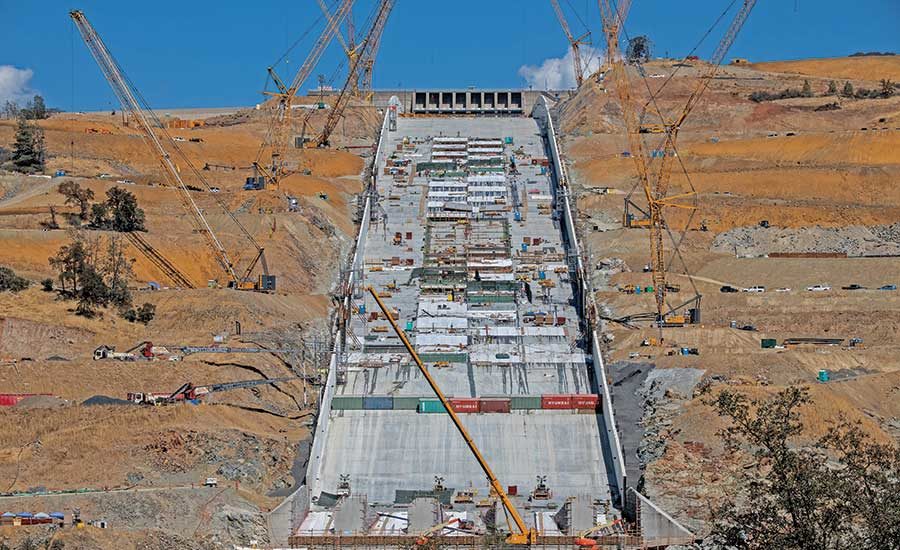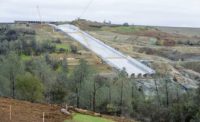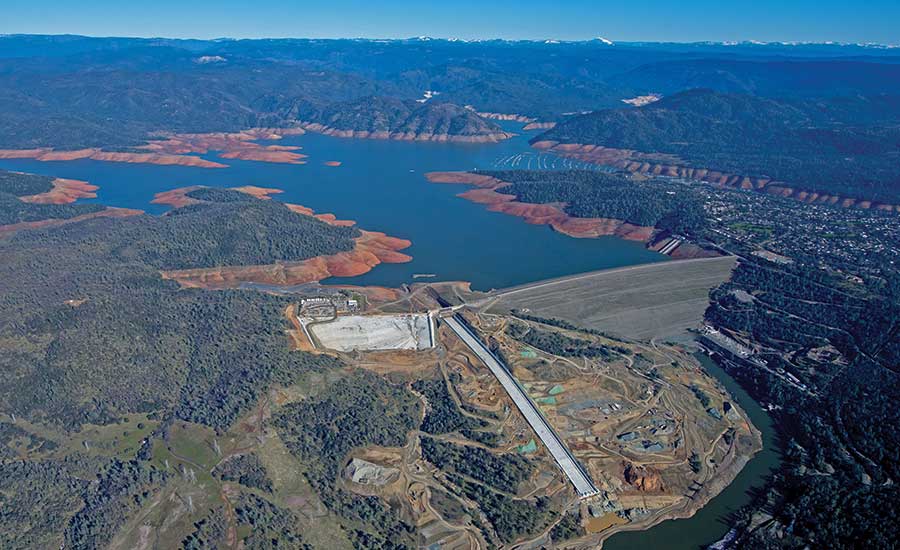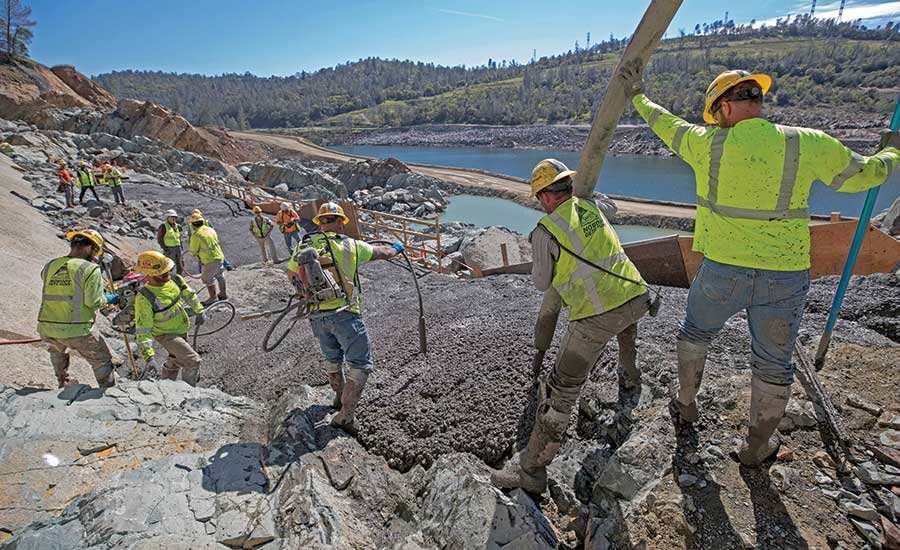ENR California's Best Projects 2019
Oroville Spillways Emergency Recovery: Northern California Project of the Year 2019

An aerial view of Lake Oroville shows the completed main and emergency spillways, finished on deadline and before California’s rainy season.
PHOTOS COURTESY STATE OF CALIFORNIA, DEPT. OF WATER RESOURCES

Crews place structural concrete slabs in the main spillway’s middle chute in September 2018.

ENR California’s Best Projects judges honored the team’s safety efforts and stellar track record of keeping workers safe.

Workers repair Lake Oroville’s spillway after it was compromised due to record rain and snow.




Oroville Spillways Emergency Recovery
Oroville, Calif.
Best Project, Water/Environment and Excellence in Safety
Owner | Structural Engineer | Lead Design Firm: State of California, Dept. of Water Resources (DWR)
Other Stakeholders: California Division of the Safety of Dams; Federal Energy Regulatory Commission
General Contractor: Kiewit Infrastructure West Co.
Subcontractors: Drill Tech Drilling & Shoring; Commercial Metals Co.
When the 770-ft-tall Oroville Dam, the tallest in the U.S., was completed in 1968, it was equipped with a 3,055-ft-long main spillway—and an emergency spillway that had never been used. That changed in February 2017 when weeks of heavy rain filled the reservoir to capacity, causing the California Dept. of Water Resources (DWR) to ramp up water releases from the main spillway.
But the heavy flows eroded a large chunk of the spillway concrete, forcing officials to hold back water while they assessed the damage. The heavy rains continued and the lake overtopped the emergency spillway—an engineered low spot on the dam similar to the edges of an overflowing bathtub.
With the torrent undercutting the front of the emergency spillway’s weir and threatening to send an uncontrolled wall of water downstream, emergency managers issued an evacuation order for nearly 200,000 people living in Oroville and other low-lying communities nearby.
The California DWR and the Federal Energy Regulatory Commission (FERC) began a 10-day bidding period for an emergency project to return the damaged spillway to functionality before the next winter season. The project team mobilized more than 500 pieces of heavy equipment, 150 construction management staff and 500 craftworkers in eight weeks.
“The Oroville Spillways Emergency Recovery Project is an incredible example of what the infrastructure industry and its agencies can accomplish in a short amount of time if we all have the same goal and the urgency to accomplish it,” says Jeff Petersen, executive project director, Oroville Spillways Emergency Recovery Project.
On the main spillway, crews demolished existing concrete and excavated soil and rock to reach solid foundation. They then batched and placed more than 340,000 cu yd of roller-compacted concrete (RCC) to fill the excavation and 140,000 cu yd of structural and leveling concrete to reconstruct the spillway. A new underdrain system also was installed.
Primary work at the emergency spillway included construction of a 706,000-cu-yd RCC splashpad, built in 1-ft lifts, for a total of 1.2 million sq ft—an area equivalent to 25 NFL football fields. The splashpad is supported by a 1,450-ft-long underground secant pile wall, built into bedrock at depths of 35 ft to 65 ft.
In April, the DWR began releasing water from Oroville Reservoir for the first time since the two-year, $1.1-billion emergency spillway reconstruction was completed in late 2018. The heavy rains and deep snowpack during the winter of 2019, as well as forecasts for additional storms, prompted the releases to help manage lake levels. The flow over the rebuilt concrete spillway, gentle at first, roared to 25,000 cu ft per second on April 6.
The crisis took many local residents by surprise. Oroville’s former mayor, Linda Dahlmeier, recalls turning her cellphone off during a short flight home from San Diego that day. “By the time I landed in Sacramento, they had called the emergency evacuation,” she says. “My daughter lives in that low-lying area with no cellphone service at her house. She only had about 15 minutes to get out, and that was with four of my grandkids. My knees just completely buckled. It was like living in the ‘Twilight Zone.’”
Petersen says the project’s greatest accomplishment wasn’t a task performed by any single person or entity, but reflected the collective teamwork that met the spillway design, construction and public safety milestones on the two-phased project—all with an excellent safety performance.
“For us, the realization of that accomplishment was felt back in April when we were able to watch the first water spill down the main spillway,” Petersen says. “More than 1,000 people from Kiewit, our subcontractors, DWR, its designers, stakeholders and key regulatory agencies put their lives on hold for 18 months to rebuild this project—and I don’t think we’ve ever been so excited to see water flow down a spillway.”
The DWR began releasing water from Oroville Reservoir earlier this month for the first time since spillway reconstruction was completed. Federal and state regulators and DWR experts “agree that the Oroville main spillway is performing as designed,” according to a DWR spokesperson. Site reconstruction continues, with completion of that segment expected later this fall.
Back to "ENR California's Best Projects 2019: Diverse Mix of Public, Private Work Garners Award"








